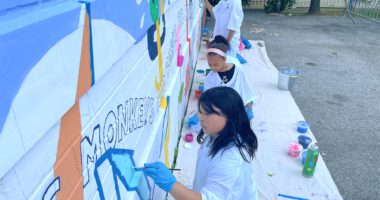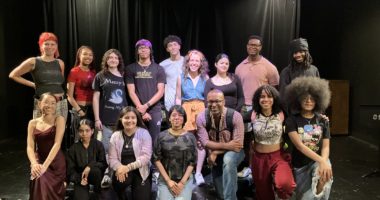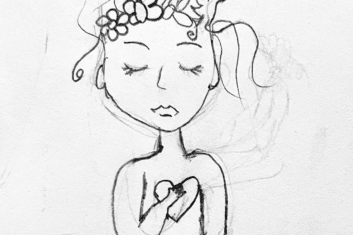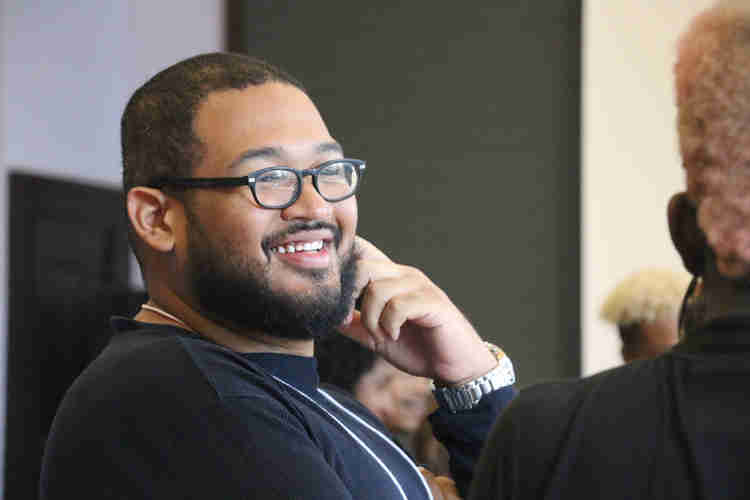

Reacclimating to a classroom setting can be challenging, especially if you haven’t been in a classroom in a while. As a new Teaching Artist, my experience with children is limited to babysitting and the six months I spent as a teacher’s assistant at a Head Start program back in 2009. I haven’t formally been a student since 2014, and it’s been even longer since I was in the 6th grade. When I walked through the front doors at P.S./M.S. 279 in the Bronx for the first day of my TAP internship, I didn’t know what to expect. But I had a few ideas.
I hoped being from the neighborhood would give me an advantage, as I grew up a ten-minute walk away from P.S./M.S. 279. My hypothesis was confirmed almost immediately. Our main exercise for the day – facilitated by my mentors, Community-Word Project Teaching Artists Tanya Everett and Chaya Babu – was to have the children create a family crest. One requirement was to include symbols of what home meant to them.
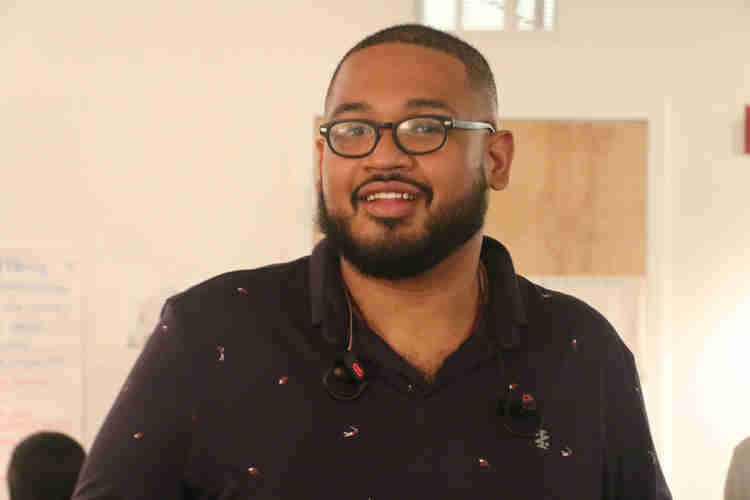

Being a 6th grade class full of first-generation children, many of the students immediately defaulted to sketching the flags that composed their ethnic backgrounds. Surely, I could relate. As children of immigrants, where our mothers and fathers come from shapes every inch of our identities. We take tremendous pride in where we come from.
But what about here and now? What about the Grand Concourse? What about the bodegas and the chopped cheeses? What about the Yankees? I found myself asking these questions as I walked from table to table, assisting the students with their drawings. The Bronx was their home just as much as it was mine, yet somehow the students largely overlooked symbols from the very borough we collectively called home.
Immediately, drawings of the “Burnside Ave” subway sign and New York Yankees’ pendants were being scribbled into the margins and corners of the papers. I also mentioned that Bronx County had a crest of its own, and every single student was curious as to what that looked like. They all wanted to know what symbols were already being used to describe our home.
I had also hoped that being a male of color would give me another advantage. The jury is still out on that one, but according to a 2016 article from The Atlantic titled, “How to Get More Men of Color Teaching in the Classroom,” only 8% of New York City’s 76,000 teachers are non-white men. That’s a staggering number considering the large population of males of color in this city. What would be different if that number started to increase? Would anything be different at all?
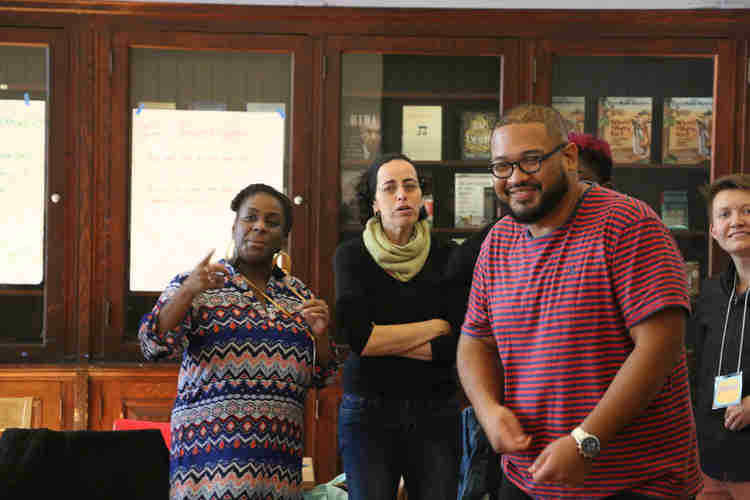

In my personal experience, the only things I require from a good educator (if I can oversimplify) is enthusiasm about their subject matter and an abundance of patience and compassion. I believe in educators who don’t set up unnecessary expectations of their students, but can still encourage students to take a step out of their comfort zones and explore their potential. I was fortunate to have many teachers like this, and although the men of color were few and far between, my experience learning from them was meaningful to me. I am grateful for them, just as I am for anybody who took the time to teach me something, but there is something to be said about seeing yourself reflected in the front of the classroom.
I’m a few weeks into my assignment, and truth be told I still don’t know what to expect. While I go into every session hoping to make some sort of an impact, the truth is that when I actually get into the classroom, all those expectations melt away. It becomes about how I can best serve the community of P.S./M.S. 279 and tend to the needs of our students. It becomes about remaining present, thoughtful, and accessible. It becomes about how I can change shape and be whatever the students need me to be in any given moment: a mentor, a disciplinarian, an entertainer, a friend, etc. As I continue down this road with Community-Word Project and P.S./M..S 279, less and less do I focus on my expectations, and the more I welcome being open and making discoveries.

